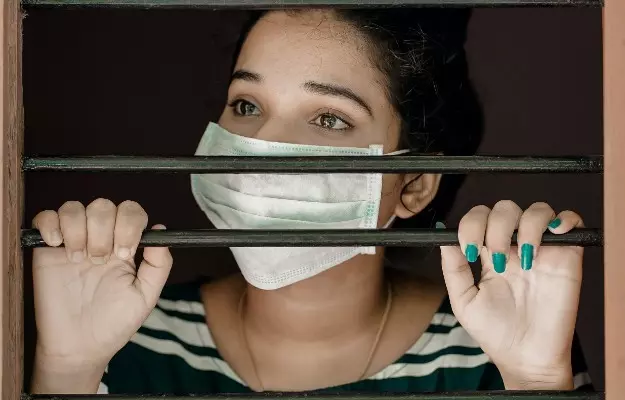Of late, a lot has been said about herd immunity, non-pharmaceutical interventions like wearing masks and observing hand hygiene to prevent COVID-19, and developing vaccines and antivirals. The truth is that these ideas are based on what we know about pandemics so far.
Whether the pandemic is caused by a bacterial infection (example, bubonic plague) or viral infection (example, influenza, swine flu, ebola virus disease and now COVID-19), knowledge is indeed power: it is important to know how the disease spreads, how it infects the body, which symptoms to look out for, how to test for the disease and eventually, how to manage it, cure it and prevent it. So step 1 in how to end any pandemic is to learn everything we can about the pathogen that’s at the heart of it. (Read more: 32 COVID-19 FAQs)
Step 2, is devising a robust strategy to test and treat people based on step 1. This can have different variations, depending on the disease. Here’s a quick look at some tried-and-tested approaches to ending a pandemic:
1. Build herd immunity, or race through the pandemic
There are two ways of achieving herd immunity: through vaccines or naturally, as patients recover from an illness.
Herd immunity through vaccines has been successful in containing some highly contagious diseases like smallpox and measles.
In the absence of a vaccine, herd immunity may be gained naturally, when enough people recover from an illness and develop immunity to it. However, this method, also called racing through the pandemic, can take a heavy toll in terms of severe sickness and even death.
In March 2020, the UK government got a lot of flak for suggesting that people should be allowed to get sick and build immunity to COVID-19 naturally. The idea was that if enough young people—who are more likely to get milder forms of the respiratory illness than the elderly and the chronically ill—became immune to the virus, they could offer herd or collective immunity to the entire population and therefore end the pandemic.
In India, too, some experts suggested that herd immunity could indeed be the answer to riding out the COVID-19 crisis with the minimum economic casualties.
Unfortunately, herd immunity cannot be guaranteed in the case of a new virus. In the case of COVID-19, there is a lot of debate around acquired immunity—scientists are still figuring out if people who have had COVID-19 once develop immunity to it, how long this immunity lasts and whether these people could become reinfected with a different strain of the virus. (Read more: Virus mutation FAQs)
The safer way to build herd immunity is, of course, through vaccination. At the time of writing, in mid-July 2020, there were more than 70 vaccine candidates for COVID-19—many of them in human clinical trials. Two of these vaccine candidates—Covaxin and ZyCov-D—have been developed in India.
Read more: T-cells help where antibodies don’t: immunity to COVID-19
2. Learn to live with the pathogen
The 1918 H1N1 influenza outbreak took a huge toll initially. Medical historians say that at the time we didn't know a lot about viral diseases, and people had to learn to live with the disease as best as they could. After about two years, the virus became less dangerous. It started returning year-on-year but it caused much less damage than before.
Virologists now know that as some viruses lose their newness, human bodies also adapt and learn how to fight the infections they cause. This is definitely one way a pandemic could end.
(Of course, this is not true of all viruses: HIV is an example—the virus mutates so quickly that scientists have not been able to make a successful vaccine to prevent infection till date, though they have come close on a few occasions.)
The WHO recently said that people around the world should learn to live with SARS-CoV-2, the coronavirus that causes COVID-19. This is not as harsh as you may believe.
The survival of the virus depends partly on what we—the human race—do to contain the virus and partly on the opportunities that the virus is able to exploit. Only the first of these is in our control. If we are able to incorporate social distancing, proper hand hygiene and these 10 preventive measures to avoid COVID-19 into our daily lives—in other words, live with the virus—we have a much better chance of denying the virus more viable hosts, thereby ending this pandemic sooner rather than later.
(Social distancing limits human contact—if human to human contact is limited, human to human transmission also becomes limited. Viruses need hosts to really live, and in the absence of viable hosts, they tend to fizzle out.)
3. Detect cases, isolate patients, quarantine contacts and contain the pathogen
Scientists say that this strategy worked well in the case of SARS for a number of reasons. One, the patients had very clear symptoms of fever and shortness of breath. Two, the authorities were able to identify, test and isolate patients and their contacts early enough and quickly enough to prevent a wider spread of the disease—they were able to limit the outbreak to Hong Kong and Toronto.
4. Get a vaccine out, even if it provides immunity for a short time
Viruses mutate. That’s why we don’t have a cure for the common cold or flu yet. At least in the case of flu, the WHO annually releases a vaccine specific to the strain that is doing the rounds that year.
With a new virus like SARS-CoV-2 (which causes COVID-19), a vaccine that provides even shorter-term immunity to a large enough set of people could buy us enough time to break the chain of transmission.
5. Don’t rush things; listen to what the WHO has to say
Of late, various countries have tried to reopen schools and other public places only to close them again as cases surged once more. If there is one thing we should take away from this, it is that getting impatient or trying to quickly resume life as it was before COVID-19 will only delay the end of the pandemic.
Further, public health scientists have been saying since the beginning of this pandemic that community participation is key. This is based on evidence that non-pharmaceutical interventions like wearing masks, avoiding gatherings, maintaining physical distance and hand hygiene work best when there is wholehearted community participation. As the pandemic stretches on, it will test the public’s resolve—and ability—to adhere to these interventions.
Experts have pointed out that an international “corroborate and crush” approach is another tool to end the pandemic in a highly globalised world. Here's why this is important: SARS-CoV-2 doesn’t seem to be affecting all countries equally or at once. After China, COVID-19 spread to countries like South Korea. After that European countries like Spain and Italy became the worst hit. The US and UK became badly hit soon after. Now, Brazil, India, Pakistan and Russia seem to be racking up the numbers.
Until we can beat this disease in all countries, the pandemic cannot be considered over in the true sense as it could come back—the 1918 influenza came back in three different waves.




























